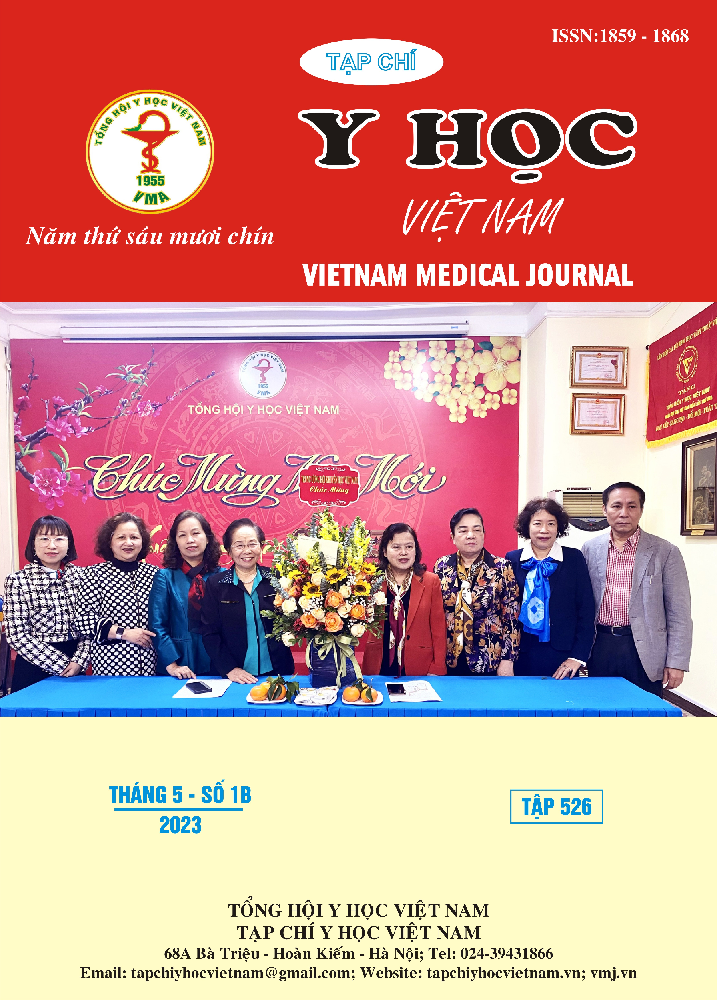NGHIÊN CỨU ĐỊNH LƯỢNG ACID GALLIC TOÀN PHẦN TRONG LÁ PHÈN ĐEN VÀ ÁP DỤNG TRONG KHẢO SÁT CHIẾT XUẤT CAO LÁ PHÈN ĐEN
Nội dung chính của bài viết
Tóm tắt
Lá Phèn đen Phyllanthus reticulatus Poir. chứa hàm lượng lớn các acid gallic, từ lâu đã được dân gian sử dụng để chữa các bệnh viêm và nhiễm trùng. Nghiên cứu của chúng tôi là nghiên cứu mới xây dựng phương pháp định tính, định lượng acid gallic trong lá Phèn đen và đã thẩm định các yêu cầu cần thiết theo quy định của AOAC. Các kết quả thu được cho thấy quy trình đã xây dựng có thể áp dụng để định tính, định lượng acid gallic trong lá Phèn đen, góp phần vào công tác kiểm tra chất lượng nguyên liệu ban đầu.
Chi tiết bài viết
Từ khóa
Phèn đen, định lượng, HPLC, acid gallic
Tài liệu tham khảo
1. Nguyễn Thượng Dong (2008), Kỹ thuật chiết xuất dược liệu, Nhà xuất bản Khoa học Kỹ thuật, Hà Nội.
2. Viện Dược Liệu (2006), Cây thuốc và động vật làm thuốc ở Việt nam, Nhà xuất bản khoa học và kỹ thuật, Hà Nội.
3. Khan Muhammad Kamran, Abert-Vian Maryline, et al. (2010), "Ultrasound-assisted extraction of polyphenols (flavanone glycosides) from orange (Citrus sinensis L.) peel", Food chemistry, 119(2), pp. 851-858.
4. Sawant L, Prabhakar B, Pandita N (2010), “Quantitative HPLC analysis of ascorbic acid and gallic acid in Phyllanthus emblica”, Journal of analytical and bioanalytical techniques, 1:111, doi: 10.4172/2155-9872.1000111.
5. The People’s Republic of China (2015), Pharmacopoeia of the People’s Republic of China 2015, Volume I, pp.204-205, China Medical Science Press, Beijing.
6. Yen Hoang Thi, Linh Trinh Thi Thuy, et al. (2015), "Optimization of extraction of phenolic compounds that have high antioxidant activity from Rhodomyrtus tomentosa (ait.) Hassk.(sim) in chi linh, Hai Duong", Academia Journal of Biology, 37(4), pp. 509-519.
7. Zokhroof Yeasmin, Sharif Tanvir, et al. (2014), "Bioactivities of Malvaviscus arboreus var. drummondii and Phyllanthus reticulatus Poir.", Dhaka University Journal of Pharmaceutical Sciences, 13, pp. 143-147.
2. Viện Dược Liệu (2006), Cây thuốc và động vật làm thuốc ở Việt nam, Nhà xuất bản khoa học và kỹ thuật, Hà Nội.
3. Khan Muhammad Kamran, Abert-Vian Maryline, et al. (2010), "Ultrasound-assisted extraction of polyphenols (flavanone glycosides) from orange (Citrus sinensis L.) peel", Food chemistry, 119(2), pp. 851-858.
4. Sawant L, Prabhakar B, Pandita N (2010), “Quantitative HPLC analysis of ascorbic acid and gallic acid in Phyllanthus emblica”, Journal of analytical and bioanalytical techniques, 1:111, doi: 10.4172/2155-9872.1000111.
5. The People’s Republic of China (2015), Pharmacopoeia of the People’s Republic of China 2015, Volume I, pp.204-205, China Medical Science Press, Beijing.
6. Yen Hoang Thi, Linh Trinh Thi Thuy, et al. (2015), "Optimization of extraction of phenolic compounds that have high antioxidant activity from Rhodomyrtus tomentosa (ait.) Hassk.(sim) in chi linh, Hai Duong", Academia Journal of Biology, 37(4), pp. 509-519.
7. Zokhroof Yeasmin, Sharif Tanvir, et al. (2014), "Bioactivities of Malvaviscus arboreus var. drummondii and Phyllanthus reticulatus Poir.", Dhaka University Journal of Pharmaceutical Sciences, 13, pp. 143-147.


